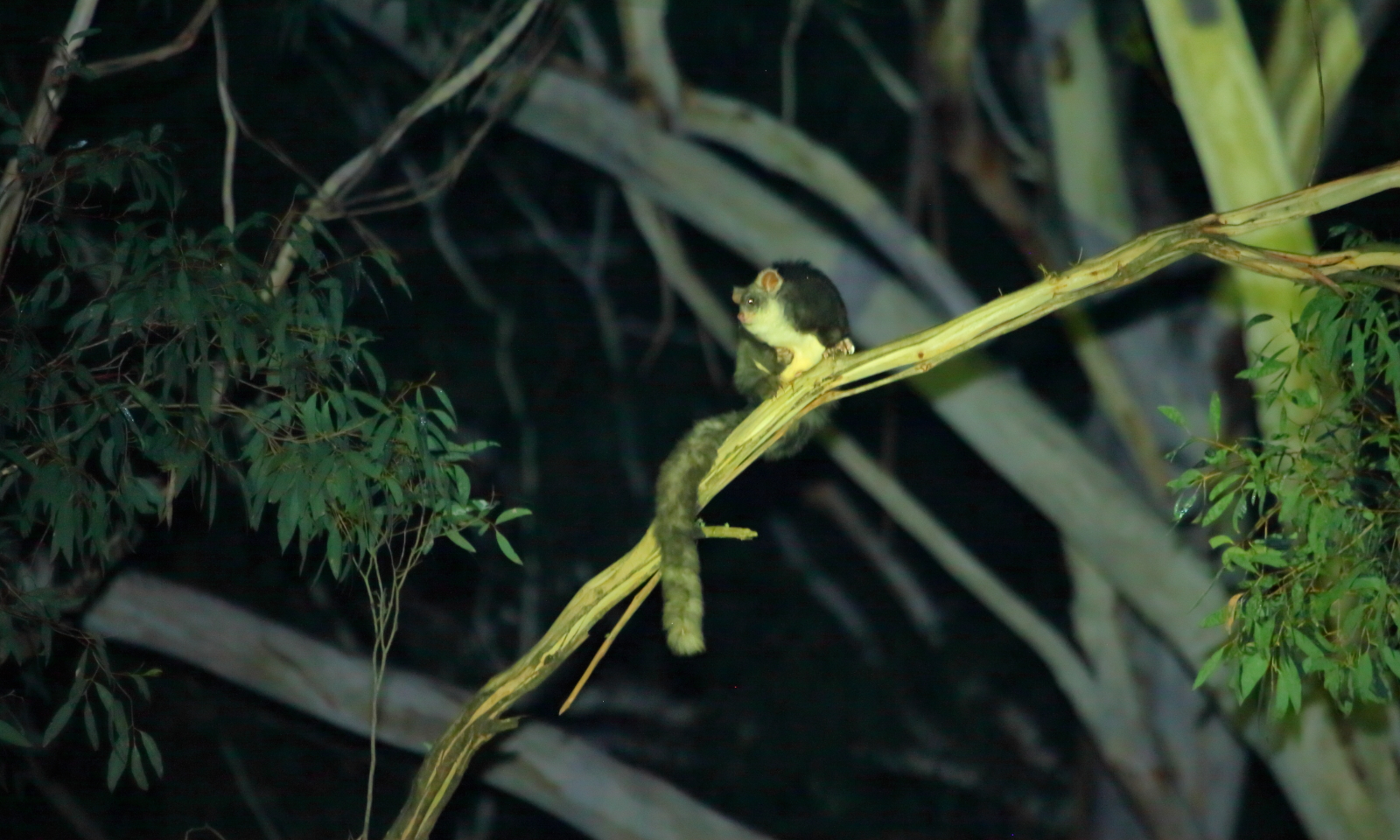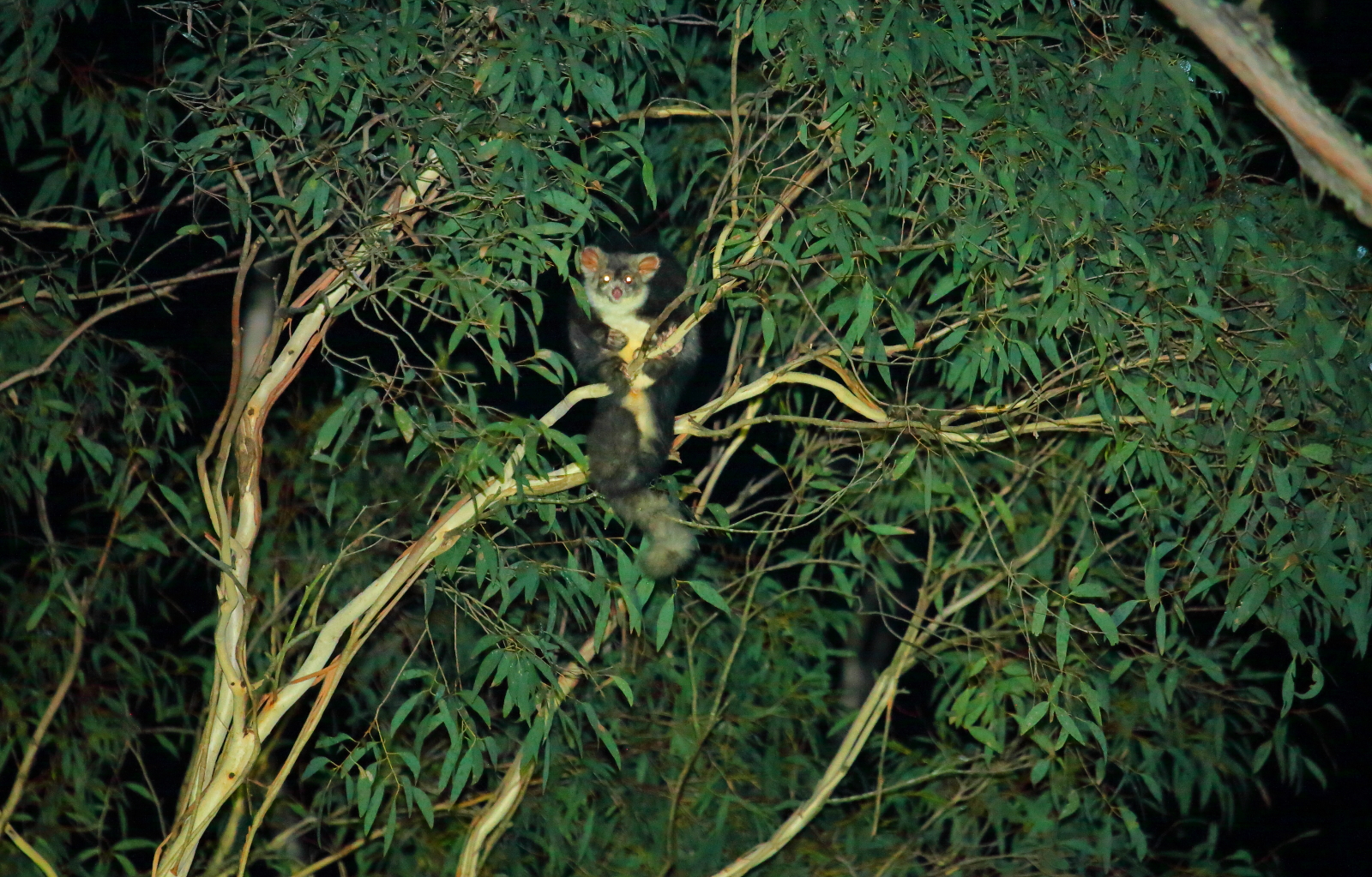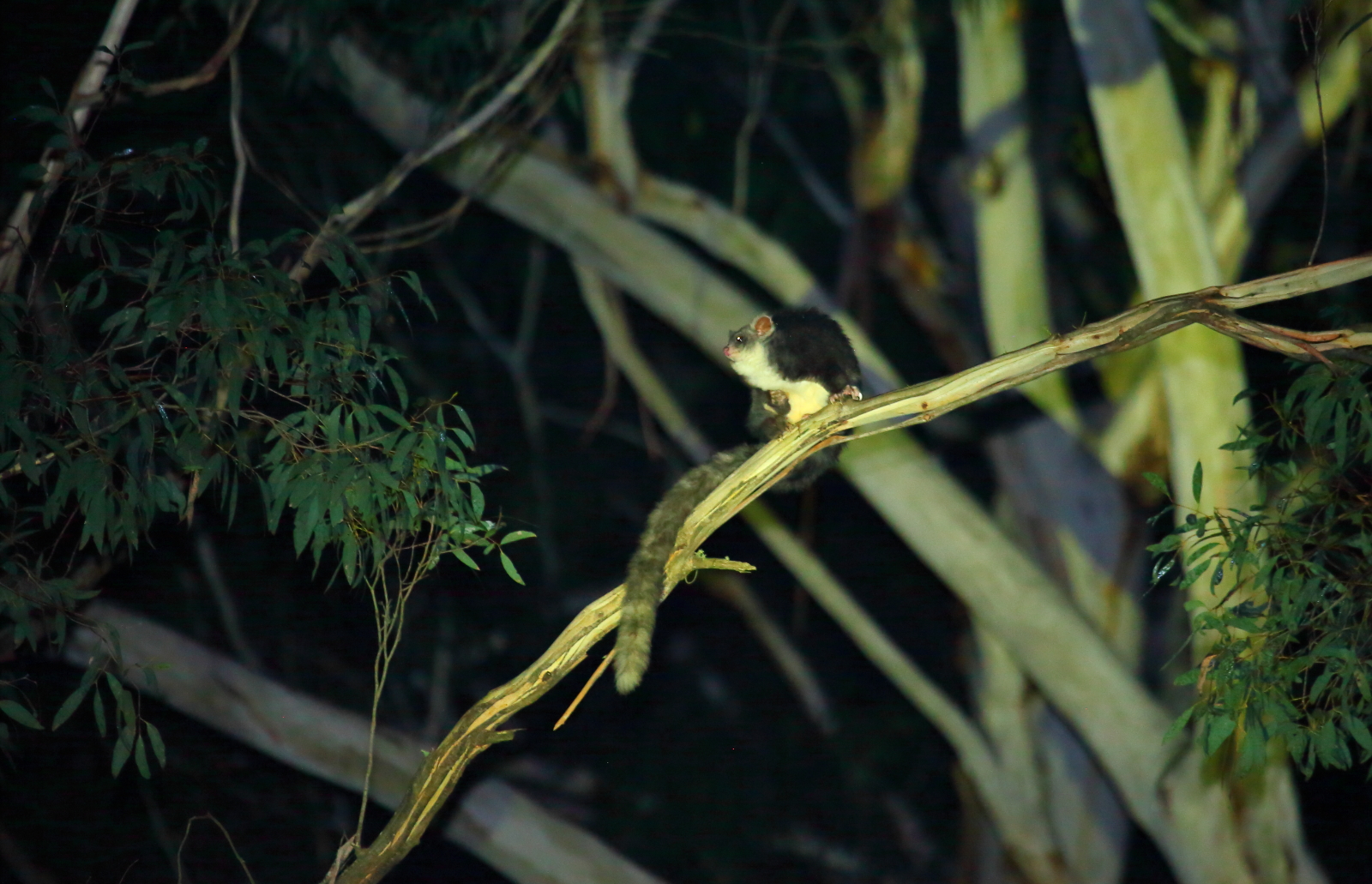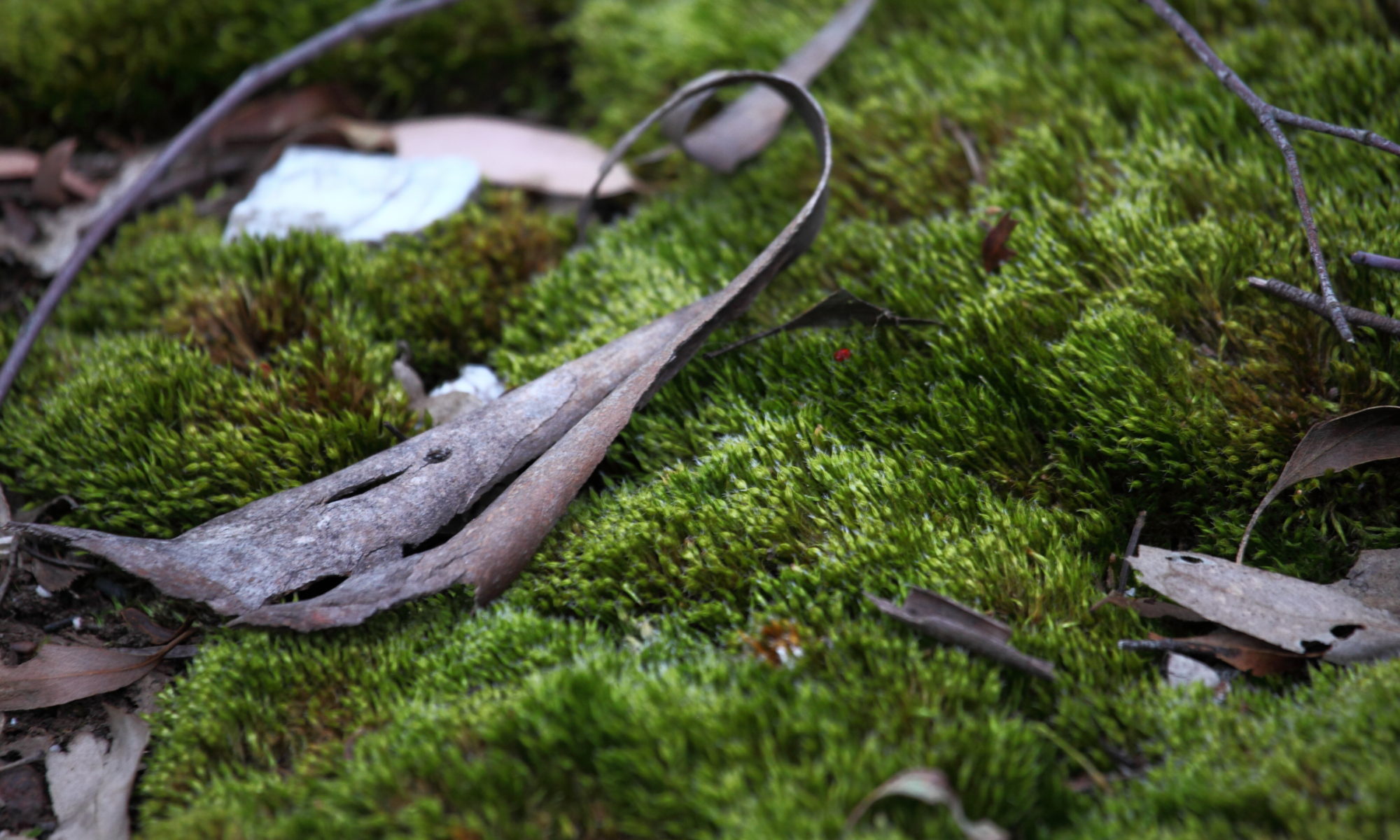

The Greater Glider is the largest gliding possum in Australia. They range from North Queensland to the Wombat Forest in Victoria and are an endangered species. They are surprisingly large looking but their fur cost is long and think making them look bigger than they actually are. Adults weight up to 1.6 kg in our area. Body length is up to 43cm and the tail is up to 53cm. So the whole package comes in at around one metre for a full sized adult. They eat Eucalyptus leaves like Koalas and are often found in the tops of trees feeding. They need many large hollows in their home ranges as they are slow moving and shift home frequently as they feed from tree to tree. 
So pleased to have found such a relatively large population doing well so close to home. The survey we attended was promoted by the Upper Campaspe Landcare Network.

How fantastic to see that they are still doing well in this area, I haven’t seen any around for a few years, so it is very comforting to know we haven;t lost them.
Great that you saw some Mark. The spotlights are part of a project called Spotlight on Species, a partnership between the Upper Campaspe Landcare Network and the Macedon Ranges Shire Council Environment department to look for three threatened species in our area: powerful owls, phascogales and greater gliders.
All resultant data is entered into the Victorian Biodiversity Atlas as a first step towards protecting the habitat of these species.
The gliders in particular are vulnerable to climate change and do not easily disperse, with not many left in this area lets hope they survive into the future.
If people are interesting in joining a spotlighting event there is a calendar of dates at http://www.uppercampaspelandcare.org.au/about-us/spotlight-on-species/
Thank you Sandy for the information.